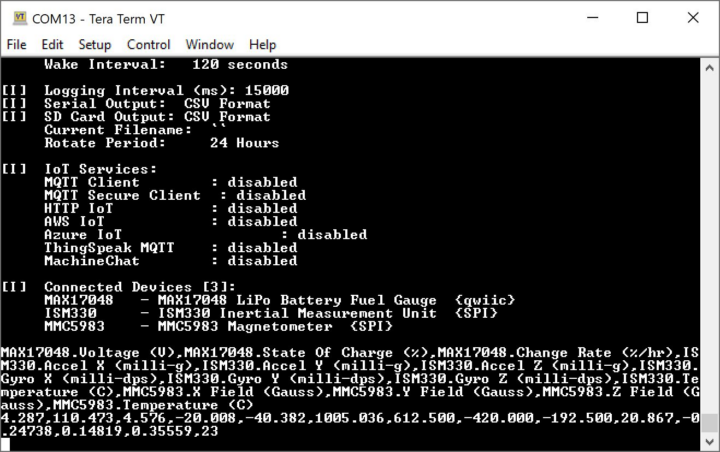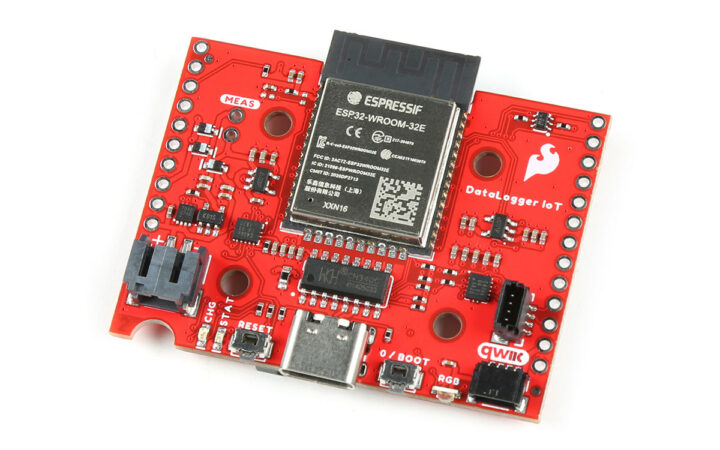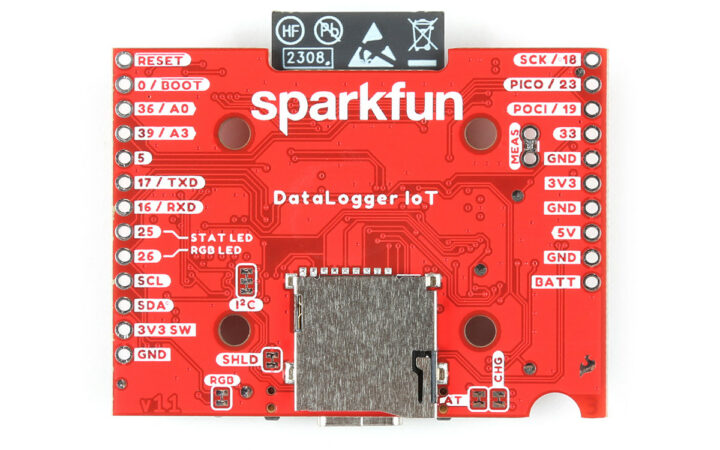Last May, SparkFun introduced the “Datalogger IoT – 9DoF” no-code platform with support for over 50 Qwiic sensor modules and a built-in 9-axis IMU sensor and magnetometer.
Taking into consideration that some users may not make use of the built-in sensors, the company decided to launch a cheaper version called the “DataLogger IoT” that can still get data from Qwiic sensor and GPS modules without any programming thanks to the “no-code” Arduino firmware preloaded on the ESP32-WROOM-32E module.
SparkFun DataLogger IoT specifications:
- Wireless module – ESP32-WROOM-32E with:
- ESP32 dual-core microcontroller
- 4MB flash
- 2.4 GHz WiFi and Bluetooth LE connectivity, built-in PCB antenna
- Storage – MicroSD card slot
- USB – 1x USB Type-C port for power and configuration via CH340C
- Expansion – 2x Qwicc I2C connectors for sensors and/or GPS module
- Misc
- Boot and Reset buttons
- Status and charging LED, WS2812 RGB LED
- Jumpers to enable/disable LEDs, I2C pull-up resistors, and USB shield
- Power Supply
- 3.3V to 6.0V via VIN
- 5V via USB Type-C port
- 3.6V to 4.2V via 2-pin JST connector or VBAT pin for a LiPo battery
- Built-in MCP73831 single-cell LiPo charger with at least 500mA charge rate
- MAX17048 LiPo fuel gauge
- Dimensions – About 5.1 x 4.2 cm
- Weight – 10.65 grams
The lower-cost DataLogger IoT board still uses the same datalogger firmware which allows the user to configure the board through a serial terminal without any programming (e.g. to set CSV/JSON data format, set the logging interval, configure MQTT, etc.), and since it relies on Qwiic modules, soldering is not needed either.
Supported Qwiic modules include u-Blox GNSS modules, proximity and ToF distance sensors, various pressure, altitude, humidity, and temperature modules, an RTC module, a weighing module, an NFC/RFID module, ADC modules, as well as air quality and environmental sensors.

Removing the ISM330DHCX 6-axis IMU accelerometer & gyroscope and the MMC5983MA magnetometer makes the board $20 cheaper with the Sparkfun DataLogger IoT going for $54.95 plus shipping. Since it does not come with any sensors at all, you’ll also need some Qwiic modules if you don’t have any already. Further details may also be found in the announcement.

Jean-Luc started CNX Software in 2010 as a part-time endeavor, before quitting his job as a software engineering manager, and starting to write daily news, and reviews full time later in 2011.
Support CNX Software! Donate via cryptocurrencies, become a Patron on Patreon, or purchase goods on Amazon or Aliexpress






